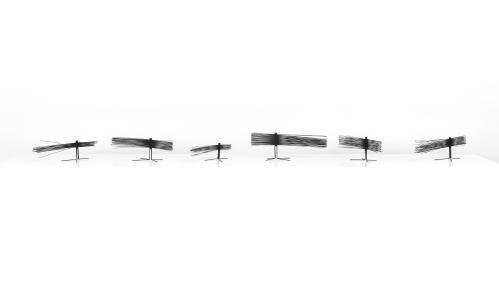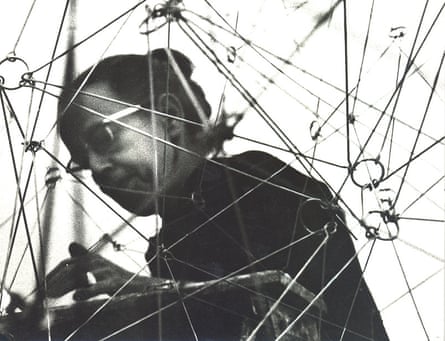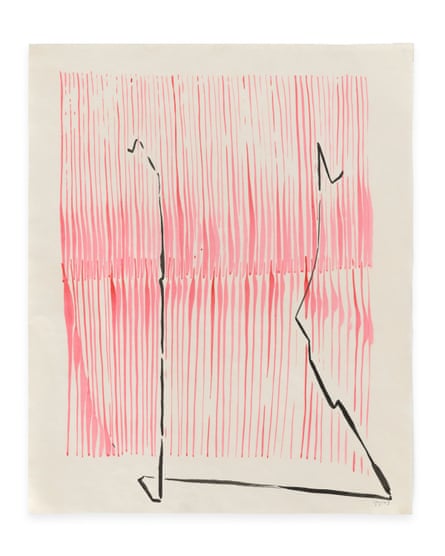The modernist artist Gertrud Goldschmidt, better known simply as Gego, was born to unassuming, if prosperous circumstances in Hamburg, Germany, in 1912. As a Jew, she fled Nazi Germany alongside her family in 1939, arriving alone in Caracas, Venezuela, which at the time was a booming capital churning with a vibrant artistic renaissance. Seizing the opportunity presented by her departure from Europe, Gego would reinvent herself in Venezuela with the freedom and fervor of an emigrant, going on to produce a body of work that many have classified among the most original artistic outputs of the 20th century.
“I believe she is part of the incredible artists of the postwar era that have touched upon not just one medium, but many mediums,” said the art dealer Dominique Lévy, a founding member of the art agency LGDR, which has just opened a tightly curated show of Gego’s work, Lines in Space. Lévy continued, “She had the courage to stay the course without worrying about trends, without any fear. She should be up there with the greatest.”
Lines in Space, which shows through 7 July at the agency’s flagship gallery, features about 40 works, headlined by the artist’s strange sculptures, including the well-known Dibujos sin papel, drawings without paper. The exhibition also features watercolors, works on paper, lithographs and others. Conceived as an atemporal encounter with a radical body of work, Lines in Space aims to be at once intimate and bracing.
Mostly consisting of very muted colors, and filled with long, thin, obsessive lines, Gego’s artwork comes across as both striking and utterly mysterious. For the most part the pieces in Lines in Space are made up of simple geometric forms repeated until they become dizzy with complexity – many resembling some demented form of a city grid – finding wonder and beauty in their intricacy. Like the best nonobjective art, Gego’s work can hold the eye with its hypnotism, even while refuting the very human impulse to find meaning, narrative or representation.
For Lévy, what is most original about Gego’s work is how she brings together oppositions into pieces that vibrate with the tension of their own differences. “What makes her essential and relevant is the way she was able to deal with sculpture,” said Lévy, “to reunite oppositions, from the very strong to the very vulnerable, from the very static to the very moving. Those oppositions come together into something that’s breathtaking. She uses very minimal material to make something incredibly grand.”
Gego’s radical art has often been associated with her radical departure from Europe and emergence in the new world. Escaping the Holocaust, Gego arrived in South America into an entirely different society from what she had known, setting the stage for her artistic emergence. “When she arrives, Venezuela is completely booming,” said Lévy. “It’s a rich country, an exciting country, and here she is. It must have been incredibly scary and yet exciting.”
Once in Caracas, Gego quickly took to the artistic community there, finding a culture that she was strangely suited to, giving her a kind of freedom that probably would have been impossible in her native Germany. “Somehow she felt a connection to Venezuela and the people there,” said Lévy. “She’s Jewish and completely able to reinvent herself in Caracas, and in that spatial freedom she discovered a new beginning.” Situated among the leading currents of modernism, Gego first attempted working as an architect and a teacher, only ultimately dedicating herself full-time to art starting in 1953. She aimed not to add on to any of the movements surrounding her but to create a style all her own. “She’s aware of everything going on in the world, yet she managed to be different,” said Lévy.

By the 1960s, Gego’s talent had begun to be appreciated. She was commissioned to make major public art pieces in Venezuela, and she had also attracted the attention of New York’s art world, having a series of exhibitions that culminated in what Lévy described as an important show at Betty Parsons Gallery in New York in 1971. That was to be her last New York show in her lifetime, although Gego did subsequently travel to Europe in the 1980s, where she found favor. After her death in 1994, in the early 2000s Gego began to re-emerge in North America, with shows including Los Angeles and Houston, and she finally came back to New York in the 2010s. “New York was first, in the 60s,” said Lévy, “and New York is last in rediscovering her.”
Gego’s return to New York may have been a long time coming, but it has been worth the wait. The Guggenheim currently offers an enormous show of nearly 200 pieces, chronicling Gego’s entire artistic development. That exhibition has been celebrated widely, and it is international in profile, having already shown in São Paulo and Mexico City, and headed next to Bilbao.
Lines in Space is meant to be an entirely different creature. According to Lévy, “We wanted to say, ‘OK, there’s a moment suspended in space where we can show works that are not at the Guggenheim.’ The Guggenheim show is very, very well done, as an understanding of Gego’s chronology and evolution. But it was not bringing together the works where they sort of echo and bounce off of and within each other.”

Aiming to offer audiences a much more intimate encounter with Gego, Lines in Space intends its pieces to dialog with each other – free from chronology and differentiation, the artworks are able to all come together. “Our small, intimate exhibition is more the desire of an experience – coming into the world of Gego rather than reading the world of Gego,” said Lévy. LGDR’s gallery is an ideal space for such an exhibition – done in the style of the 18th century, the gallery’s chessboard tiling and ornate white walls present a sensation of volume, giving the work room to breathe.
For Lévy, being able to show Gego’s work has been a decades-long project. She first encountered Gego’s art in Los Angeles in the early 2000s, where it filled her with emotion. She has subsequently staged exhibitions of Gego’s work in New York and London, and has published a comprehensive book on the artist – Gego: Autobiography of a Line. Lévy believes that justice will not be done until Gego’s name is among the greatest in the art world. “It’s work made with a breath of freedom,” said Lévy. “I hope for a big European retrospective next. It’s needed.”

